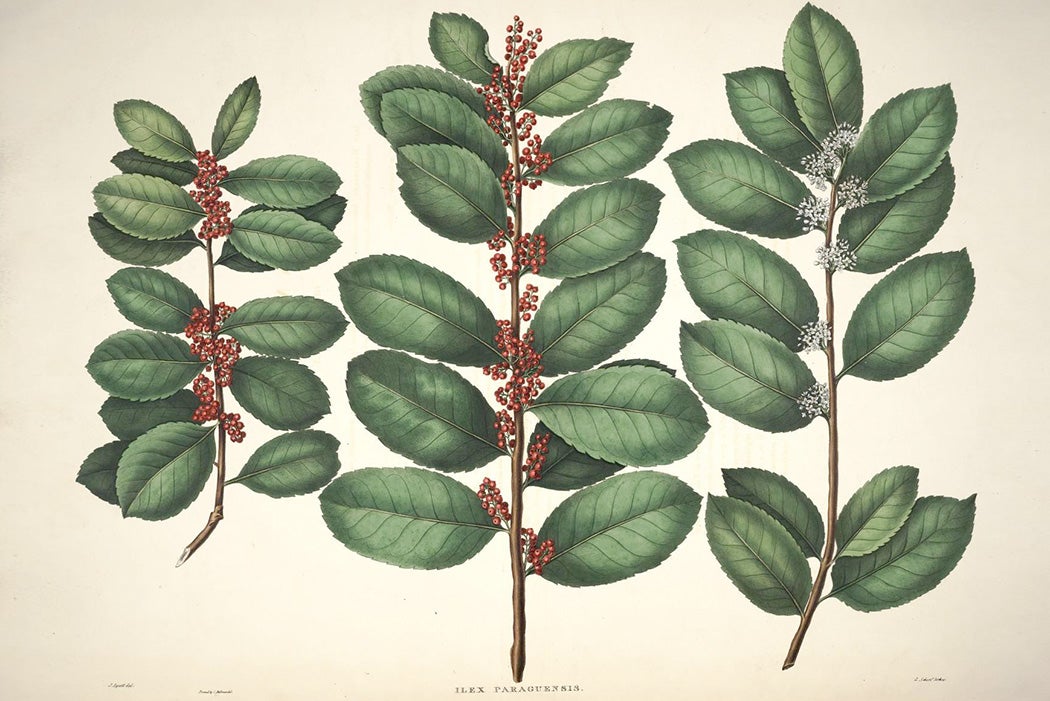While watching the 2022 World Cup, viewers might have caught a glimpse of soccer superstar Lionel Messi and other South American players carrying a vessel containing a greenish herbal drink called yerba mate, or simply, mate. The New York Times, in fact, reported that the Argentine national team brought 1,100 pounds of mate to Qatar to support the players’ drinking habit, while Uruguay’s delegation packed around 530 pounds. Some even speculated that mate might have been Argentina’s secret weapon to win the tournament due to its caffeine content and stimulant properties. But how did this herb, originally harvested and consumed by the Guaraní people in present-day Paraguay and its neighbors, become widely associated with South American countries? From a medicinal and religious beverage consumed by Indigenous communities to a tool of the Spanish empire, and from an organic-hip drink recently introduced in the United States to a Syrian staple, mate’s history crosses multiple geographies and cultures. At the same time, mate’s local success, as opposed to the global fortunes of coffee or tea, reveals how factors such as difficulty of cultivation and cultural patterns of consumption render the travels of plants and people more unpredictable than we tend to think.
Ilex paraguariensis is an evergreen shrub or tree native to the subtropical forests of Brazil, Paraguay, Uruguay, and Argentina that can grow up to forty-nine feet tall. It’s a plant species of the genus ilex (or “holly”) that contains caffeine as well as other alkaloid components, and it has stimulant, diuretic, antioxidant, and antimicrobial properties that made it attractive to both the indigenous Guaraní people and to Spanish colonial settlers. After being dried, roasted, and powdered, mate leaves are used to prepare a hot or cold beverage, also known as mate or Paraguayan Tea. The loose powder is typically steeped in hot water in a drinking vessel (also called a mate) and strained through a metallic straw, or bombilla, shared by many people, passing from mouth to mouth. Although the origins of its group consumption are obscure, recent research suggests that it might have been part of Guaraní celebrations in honor of Tupâ, the god of rain and water. Even today in South American countries, the same mate and bombilla are shared in social gatherings, a habit that has endured despite recent public health campaigns to prevent COVID-19. Drinking mate remains, above all, a bonding ritual.
Weekly Newsletter
The plant was first given its Western scientific name by French botanist Auguste de Saint-Hilaire, who traveled throughout South America between 1816 and 1822. Saint Hilaire first identified Ilex paraguariensis, which he deemed an “interesting” tree, among the ruins of the former Jesuit missions in Paraguay and Brazil. Like many other European botanists of his time, Saint Hilaire was not only concerned with the classification of plants but also with their medicinal and commercial value, and mate was already one of the most traded commodities in the region. In fact, on the title page of his Plantes usuelles des Brasiliens (1824), Saint Hilaire reproduced a quotation by Swiss botanist Augustin Pyramus de Candolle claiming that “the habitants of the Americas will become more and more independent of the Old World by using similar plants for the same purposes as we do.” Paradoxically, the history of mate is a case study of how American plants were turned into commodities to strengthen European rule over Indigenous peoples rather than to foster their autonomy and independence.
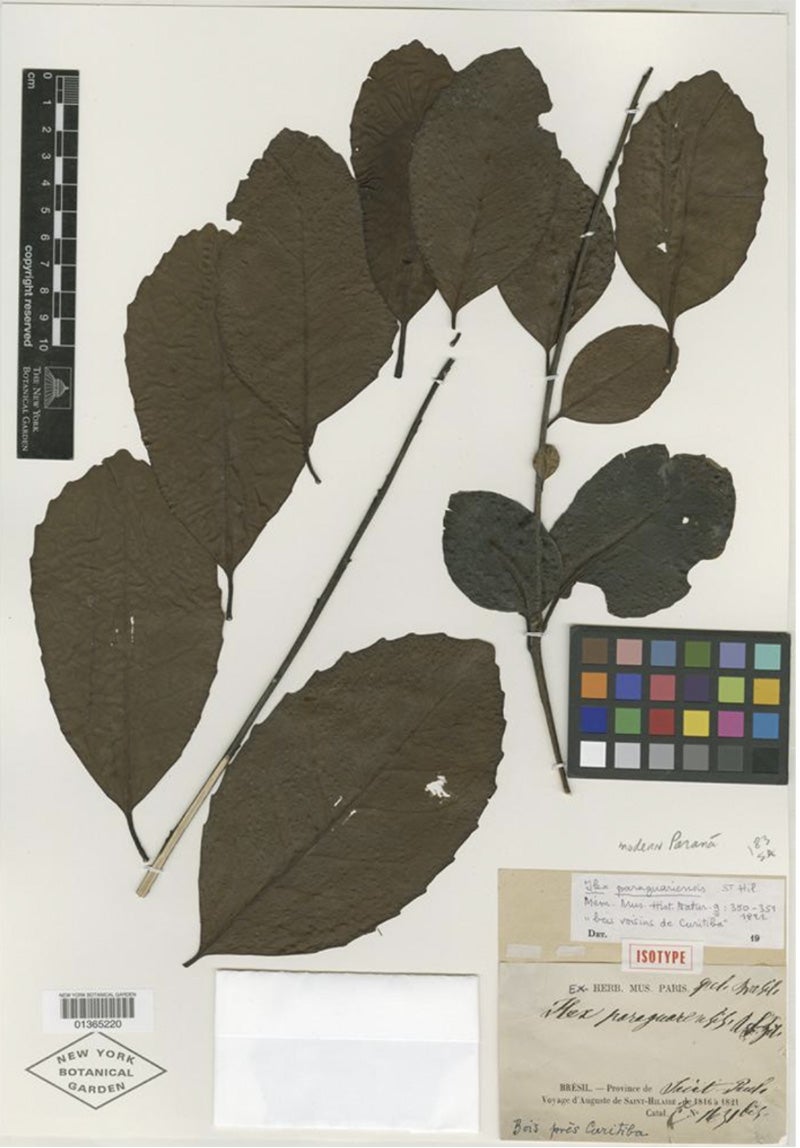
The history of Jesuits in South America is deeply entangled with the history of mate, as historian Julia J. S. Sarreal has shown. Since the sixteenth century, Spanish settlers had noticed that the Guaraní people drank mate as an infusion for its energizing and healing properties, and quickly took up the habit themselves. But mate had a wider significance, since it played an essential role in Guaraní religious practices and narratives of the origins and the end of the world. Héctor A. Keller reports that according to one of these origin narratives, the Guaraní’s first ancestor turned her daughter into a large mate tree whose branches would yield the seeds of all the other native plants in the region, initiating a cyclical process of birth and regeneration that would live through all possible catastrophes and cataclysms.
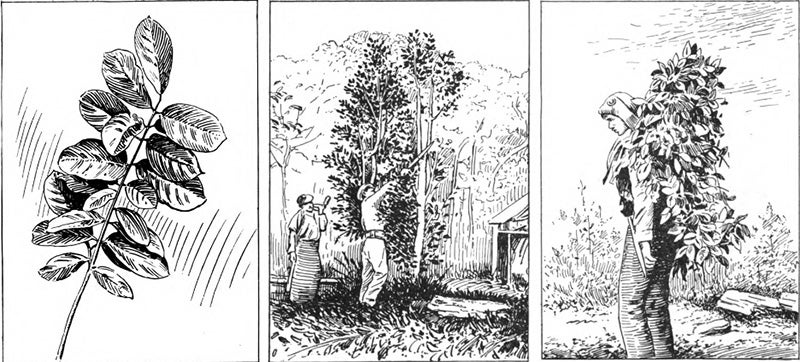
One of the catastrophes that put both the Guaraní people and the native flora’s resilience to the test was the Spanish invasion. According to Elman Service, shortly after settling in modern-day Paraguay, Spanish rulers made yerba mate into the region’s first cash crop and even a form of currency, forcing Indigenous people to work intensively in cutting, curing, and carrying mate to the newly founded urban markets. Labor exploitation was so intense that settlers even forbade the Guaraní to collect the plant for themselves during certain times of the year, severely disrupting both their own use of mate as a recreational and religious plant and the ways in which they harvested it in the wild.
Partially with the declared aim to reverse such living conditions, the Jesuits established their missions in the Guaraní territories in 1609. At first, they were suspicious of mate, but their attitude quickly changed. In a 1710 manuscript attributed to Jesuit Pedro de Montenegro, published as Materia médica misionera, Montenegro describes how the Guaraní people drank mate to stay awake, prevent drunkenness, and treat sunstroke and stomach aches, among other ailments, and how they used the leaves of the plant to disinfect wounds and tighten loose teeth.
Other Jesuits, including José Cardiel, admitted that raising the plant where it didn’t grow wild was extremely difficult, which prevented settlers from establishing mate plantations. Anthropologist Christine Folch explains that because of their extremely hard shells, mate seeds are very difficult to germinate. Thus, drawing on Guaraní knowledge and labor, the missions became the first site to domesticate the plant by either feeding mate seeds to barnyard birds to wear down the seed’s hard casing or somehow mimicking the softening action of passing through the digestive tracts of birds. As a result, Sarreal argues, the missions were able to supply regional markets as far away as the Andes, a key factor in explaining their wealth and why their population eventually grew to host up to 140,000 people. Sarreal claims that mate was therefore turned into a “tool of empire” that connected regions, acculturated Guaraní people, and funded the colonial government. Still, it wasn’t exported to Europe, perhaps because other caffeinated plants like cacao, tea, and coffee were already available in Europe by the eighteenth century.
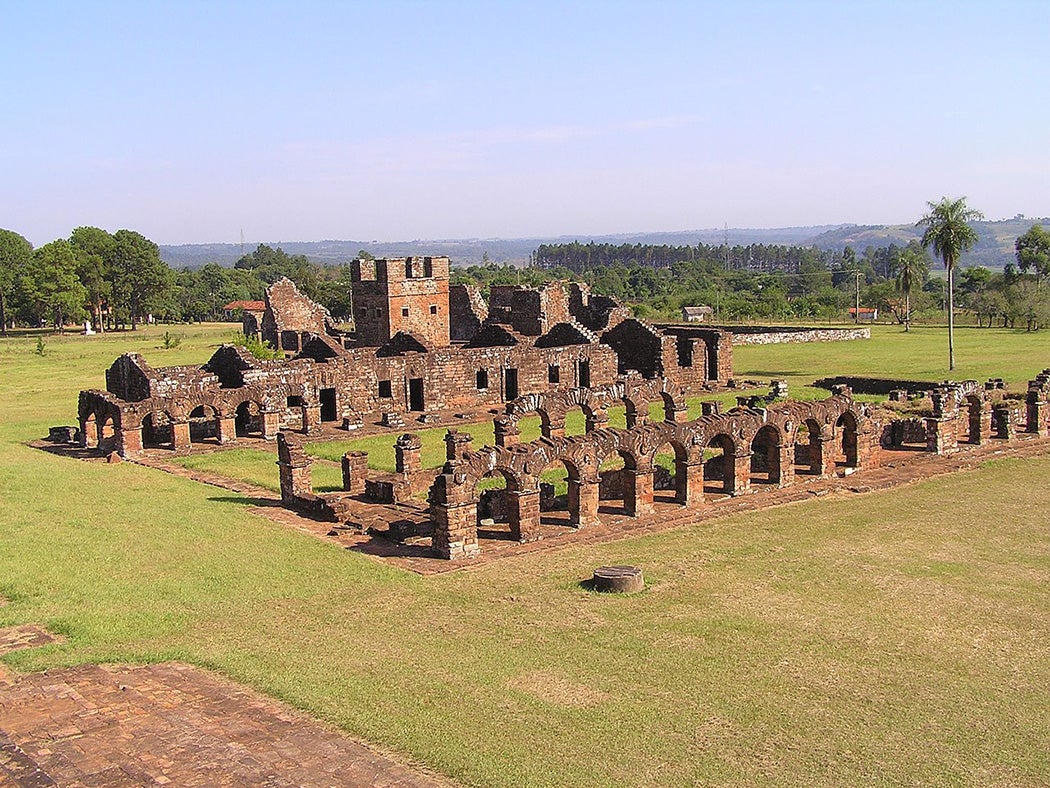
In 1767, when Spanish king Charles III expelled the Jesuits from the Americas, the mate plantations were soon abandoned by the Guaraní people due to the dreadful conditions imposed upon them by new landowners. Ross W. Jamieson explains that mate proved harder to cultivate than expected, and Spaniards went back to harvesting it in the wild. Still, the mate craze didn’t stop. By the time Auguste de Saint-Hilaire studied the plant in the 1820s, mate had become a national symbol across social classes in many South American countries, as shown in 19th-century visual and written documents. Moreover, it contributed to political tension in the region, with Brazil, Argentina, and Paraguay competing to dominate the mate trade. Some of the areas where mate grew wild were the object of territorial disputes among the three newly independent nations, and these disputes eventually added to the breakout of the Triple Alliance War (1864–1870) that turned Brazil and Argentina against Paraguay. By the end of the war, writes Folch, having annexed large mate-producing areas, Brazil dethroned Paraguay as the world’s top producer.
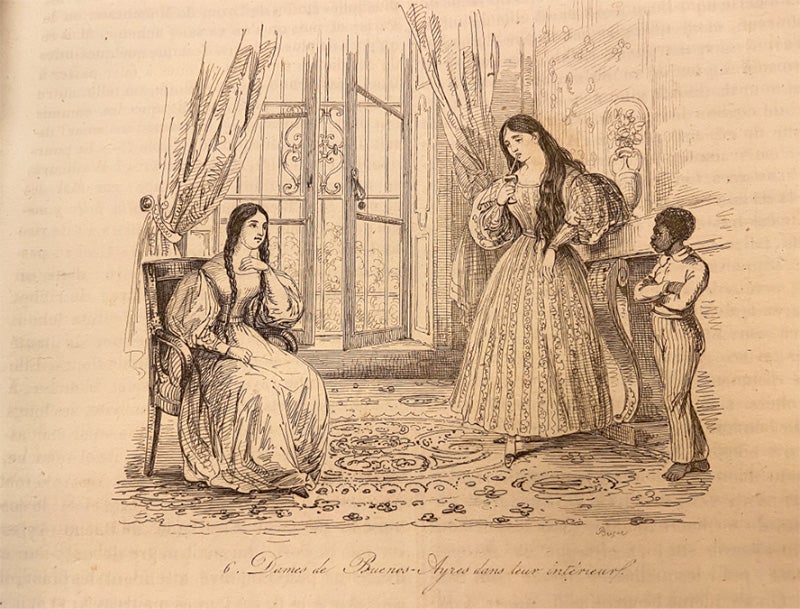
The most famous mate farmer of all times, Aimé Bonpland, the French naturalist who had traveled throughout the Americas with Alexander Humboldt between 1709 and 1804, was at the center of these disputes around ownership and cultivation of the plant. While Humboldt achieved celebrity status upon his return to Europe, Bonpland remained a more elusive figure in the shadow of his former travel companion, as Stephen Bell puts it. Bonpland returned to South America to work as a university professor in Buenos Aires, but after civil war broke out, he settled on the Argentina-Paraguay border, where he cultivated his latest and most intense botanical obsession: mate. The project raised many eyebrows. The dictator of Paraguay, José Gaspar Rodríguez de Francia, sought to regulate mate prices and sales, and he was suspicious of Bonpland, whom he thought to be a French spy. Thus, in 1821, Bonpland was imprisoned and taken to Paraguay, where he remained captive for nine years until he was released and allowed to return to Argentina, where he died on his mate farm.
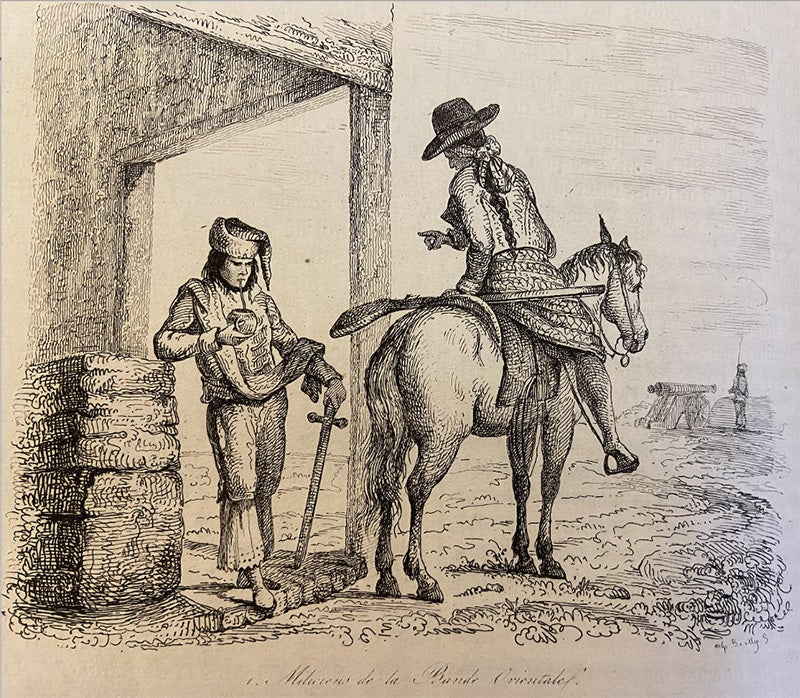
Bonpland’s bumpy biography mirrors that of mate as a commodity: he started big, but his reputation didn’t travel as far as those of other botanists––just like mate didn’t become a global commodity, unlike other caffeinated plants. The reasons are instructive and offer a window into the complexity of plant-human interactions. Folch explains that the fact that Ilex paraguariensis was difficult to domesticate must have influenced the plant’s scarce travels beyond South America. And because other stimulant drinks were already available in Europe, colonial powers might not have been interested in developing sophisticated methods to transplant mate, especially since the Spanish Empire’s economic policy was geared towards tax collection and internal trade rather than global expansion. Moreover, still to this day, the social rituals associated with drinking mate––sharing one same vessel and straw––aren’t accepted everywhere.
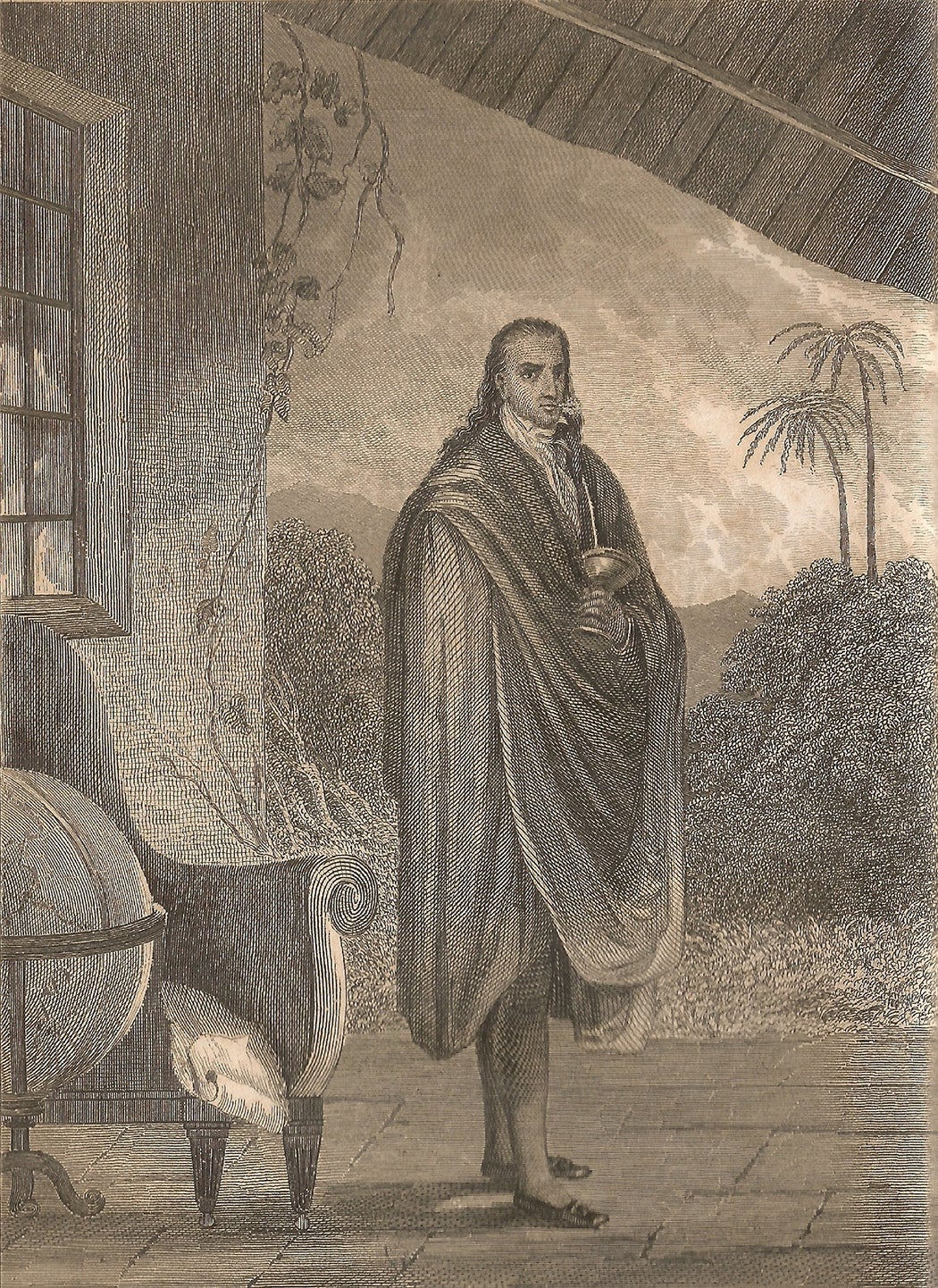
The distinctive biological and cultural profile of mate has undoubtedly hindered its global expansion, unlike other plants native to the Americas, such as cacao and maize. But it hasn’t stopped it from traveling altogether. The world’s second-largest importer of mate today is Syria, which prompted the country’s Central Bank to include mate among essential commodities supported for import. Ethnographic research shows that late nineteenth- and early twentieth-century Syrian immigrants in South America who returned to their home country brought back mate with them, turning it into their caffeinated drink of choice, ahead of coffee and tea. In addition to its health properties, anthropologists argue that mate’s popularity is strongly linked to Syrian social relationships. Syrian families, they claim, spend much time together; thus, mate, consumed slowly, “provides an atmosphere suitable for long sessions,” while coffee “is considered by many informants as a short-duration drink.”
As mate makes its way to stores in the United States, it may take different forms of consumption, such as bottled energy drinks, that, in turn, will bring new, unexpected social rituals. The Plant Humanities Initiative at Dumbarton Oaks investigates precisely this creative interaction between plants and humans to understand their entangled histories and imagine their open-ended futures.
